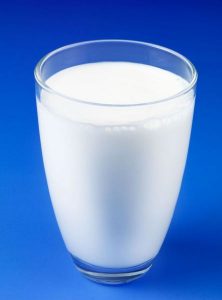Low Fat Milk
 Everyone knows that milk and its products contain saturated fatty acids and one should avoid them and rather use low fat products.
Everyone knows that milk and its products contain saturated fatty acids and one should avoid them and rather use low fat products.
What does “low fat” mean? 20%, 10%, 5% or 0%?
The hysteria over the fat led to low fat products of 0%. The fat problem seems thus solved. But may one eat it now without concern?
Not exactly!
In the classical nature medicine, each product under a 10 % fat content is considered as low fat. But, beside the nature medicine or the diet lovers, let us look at the origin: the mother’s milk and/or the cow’s milk.
Which fat content do the two milk sorts contain?
For the astonishment of many, the two milk sorts contain exactly the same fat content of 3.8%. That means that nature offers us 3.8% fat content in the mother’s milk and in the cow’s milk. One assumes nature is right and the fat is beneficial as well for the baby and as also for the adult. Because the difference between a baby and an adult lies in growing and this is the responsibility of the proteins in the milk and not the fat. The protein content is actually three times as high in the cow’s milk as in the mother’s milk, because the calf grows relatively faster and bigger in size.
Thus why is the fat content 3.8%?
The milk contains the Vitamins A and D, which can be absorbed by the body only together with fat. The optimal fat content for the absorbing of these vitamins is exactly 3.8%. Therefore all milk products are most favorable, with a fat content around the 4%: 5% cheese, 3% milk, 3% yogurt…
In order to be able to absorb the Calcium, which is another important element of the milk, the body needs beside the Vitamin D also a little fat.
What happens now with the 0 % milk products?
Vitamin A is not absorbed and exits the body.
Vitamin D is not absorbed and exits the body also.
The Calcium looks for the Vitamin D, doesn’t find any and disappears likewise.

